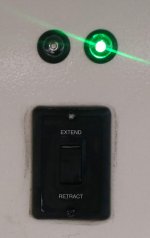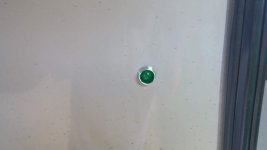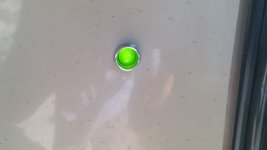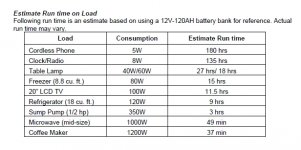Many have seen the External Status Light I put on my last 2 demo coaches for the Inverter for the Residential Refrigerator.
The purpose of this mod was to know the status of my Inverter and by extension, my Residential Refrigerator while underway. If the light is ON, the likelihood of my Refrigerator being on is very high. If the light is OFF, with absolute certainty, my Refrigerator is also off.
Here's a link to the mod (with parts list and instructions via attached PDF) if anyone is interested in doing it.

So my story of how it saved my food, or at least my ice cream is that early this January, in very cold weather, we left Colorado for Arizona with a refrigerator full of food. During our first day of travel, in my rearview mirror, I noticed my green inverter status light was OFF! As it was VERY cold out, I decided to wait until later to address it.
Thinking through it as I drove, I determined that the GFCI outlet on the inverter was tripped. I came to this determination as I knew the following to be true:
1. The inverter remote switch green LED inside the RV was lit
2. The battery status indicator showed a full battery charge
This told me that the inverter "should" have sufficient DC power but just wasn't producing AC power or that power was not getting to the refrigerator receptacle. There are a few other items downstream of the inverter AC receptacle but they were less likely to be the issue:
- Dedicated mini auto-transfer switch (ATS)
- Wiring from ATS through underbelly, into and through slide to behind refer
- AC receptacle next to refer
While on shore power, I was able to access the inverter and reset the GFCI receptacle. That was the issue.
This happened one more time the next day and I was alerted to same by the Inverter Status Light.
The purpose of this mod was to know the status of my Inverter and by extension, my Residential Refrigerator while underway. If the light is ON, the likelihood of my Refrigerator being on is very high. If the light is OFF, with absolute certainty, my Refrigerator is also off.
Here's a link to the mod (with parts list and instructions via attached PDF) if anyone is interested in doing it.

So my story of how it saved my food, or at least my ice cream is that early this January, in very cold weather, we left Colorado for Arizona with a refrigerator full of food. During our first day of travel, in my rearview mirror, I noticed my green inverter status light was OFF! As it was VERY cold out, I decided to wait until later to address it.
Thinking through it as I drove, I determined that the GFCI outlet on the inverter was tripped. I came to this determination as I knew the following to be true:
1. The inverter remote switch green LED inside the RV was lit
2. The battery status indicator showed a full battery charge
This told me that the inverter "should" have sufficient DC power but just wasn't producing AC power or that power was not getting to the refrigerator receptacle. There are a few other items downstream of the inverter AC receptacle but they were less likely to be the issue:
- Dedicated mini auto-transfer switch (ATS)
- Wiring from ATS through underbelly, into and through slide to behind refer
- AC receptacle next to refer
While on shore power, I was able to access the inverter and reset the GFCI receptacle. That was the issue.
This happened one more time the next day and I was alerted to same by the Inverter Status Light.





